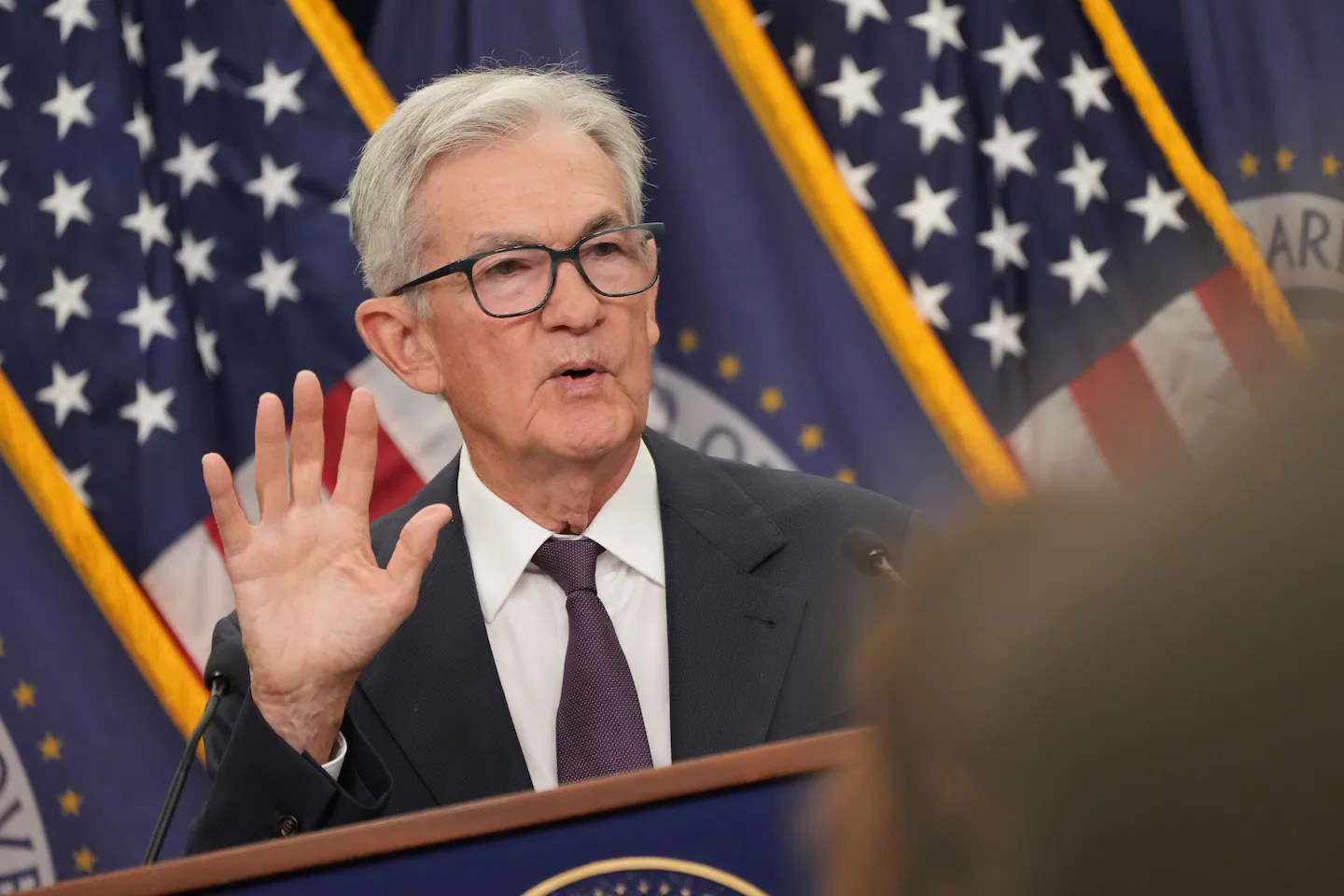
Sign up now for the inaugural Trendlines webinar, where the Globe’s Dana Gerber and I will break down President Trump’s pressure campaign on higher education. Tune in on Sept. 30 at noon.
The Trump administration is wielding a full toolbox to bring the media to heel.
Trump asked the Supreme Court for an emergency order to remove Lisa Cook from the Fed board.
KKR will occupy more than 132,000 square feet of space at 2 International Place, in one of the largest office leases in the city this year.
President Trump has cowed law firms, universities, and giant media companies into obedience or silence. But one institution isn’t backing down: the Federal Reserve.
Despite Trump’s threats to its independence — he nearly fired chair Jerome Powell and is fighting in court to remove Governor Lisa Cook — the central bank is ignoring the president’s demand for drastically lower interest rates.
Instead, it is doubling down on its deliberate approach to policy: weighing risks to the economy, adjusting interest rates as those risks change, and going where the data leads. Policy makers declined Wednesday to provide the “big cut” demanded by Trump, opting for a quarter percentage point cut and projecting two more quarter-point cuts this year and one in 2026.
“We’re doing our work exactly as we always have,” Powell said at a news conference Wednesday.
The Fed’s caution is appropriate even though it will likely encourage Trump to escalate his efforts to gain control of the seven-member board of governors. Prudence makes sense because the Fed finds itself between a job market rock and an inflation hard place.
The labor force is barely growing due to immigration restrictions and fewer people entering the job market. Without more workers, the economy will struggle to expand.
The economy is losing momentum. Economic growth has slowed to about 1.5 percent this year from 2.5 percent last year.
Employers are hunkering down in “low-fire, low-hire” mode. That’s why the jobless rate remains relatively low — 4.3 percent in August.
But an extended hiring drought — or a deluge of layoffs — would push unemployment higher. Powell told reporters that employers probably aren’t adding jobs fast enough to keep the jobless rate steady.
Inflation is inching higher. The Fed’s preferred consumer price index increased an estimated 2.9 percent in the 12 months through August, the fastest rate since March 2024 and above its 2 percent goal.
In projections released on Wednesday, Fed officials forecast the core Personal Consumption Expenditures price index, which excludes more volatile food and energy costs, would tick up to 3.1 percent by the end of the year, before falling back to 2.4 percent in 2026.
The specter of stagflation lingers. In the 1970s and early 1980s, a toxic brew of high inflation, stagnant economic growth, and high unemployment haunted the US.
Fed officials hinted in their projections that the ghost of stagflation could return.
The Fed “altered its economic assessment stressing a stagflationary-lite environment with job gains slowing, the unemployment rate moving up, and inflation rising,” Gregory Daco, chief economist at EY-Parthenon, said in a note.
But the sky isn’t falling. Fed officials don’t expect unemployment to get much worse, and they nudged up their growth forecasts for this year and next.
The impact of tariffs is a wildcard.
A “reasonable base case” is that import taxes will create a one-off hit to prices, Powell said. “But it is also possible that the inflationary effects could instead be more persistent. . . Our obligation is to ensure that a one-time increase in the price level does not become an ongoing inflation problem.”
In the Fed’s view, rising unemployment is a bigger risk than inflation. Wednesday’s quarter-point rate cut was a precautionary move to support hiring, not the start of a desperate rescue, Powell said.
The irony is that the Fed would have more leeway to cut rates if Trump hadn’t started a tariff war. Moreover, his attempts to exert political influence over rates has forced central bankers to dig in.
But there is a range of opinions among policy makers. The median projection pointed to two more rate cuts this year. However, 10 of the 19 Fed officials signaled three or more cuts would be necessary.
Still, one Fed official dissented. Stephen Miran, who was sworn in Tuesday to serve until January, preferred a half-point reduction.
Miran, who is on leave from his job as chair of the White Council of Economic Advisers, is one of three Trump appointees on the seven-member board of governors, along with Christopher Waller and Michelle Bowman.
Fed watchers took that as a sign that Powell and his colleagues weren’t going to fold under Trump’s pressure for faster cuts.
“Both Trump appointees, Bowman and Waller, did not dissent,” Harvard economist Jason Furman said on X. “Bodes well for the Fed’s independence.”
Customize your Google searches to see Boston Globe stories more often. Why? It will help you access our great journalism and allows us to continue creating must-read newsletters like Trendlines. Sign up now.
“Ben & Jerry’s has been silenced, sidelined for fear of upsetting those in power.”
— Cofounder Jerry Greenfield, on why he quit the company after 47 years.
Under the knife: University administrators have instructed Harvard Medical School to cut its research enterprise by at least 20 percent by the end of this fiscal year.
Goal! Women’s soccer team Boston Legacy Football Club scored more than $100 million in debt from Bank of America for its share of the rebuilding costs for White Stadium.
Motion denied: A federal judge dismissed a lawsuit that the former CEO of Steward Health Care filed against 20 US senators, saying lawmakers have immunity from such actions.
Same game: US Treasury Secretary Scott Bessent once agreed to occupy two different houses as his “principal residence” at the same time, mortgage documents show — the same kind of contradictory pledges that President Trump has been using to try to oust Federal Reserve Governor Lisa Cook.
Grid lock: A block of Harvard Square will be permanently closed to traffic to allow for outdoor dining spaces.
$5 billion
— The amount Nvidia will invest in struggling Intel as part of a deal to collaborate on custom data centers that form the backbone of artificial intelligence infrastructure, as well as personal computer products.
I guess it’s never too early to plan a leaf-peeping trip.
The Globe’s travel section is out with recommendations from correspondents Diane Bair and Pamela Wright on New England’s most picture-perfect fall foliage towns. Here are the local spots and the best way to experience the views:
Camden, Maine. Everybody heads to the summit of Camden Hills State Park for primo overlooks of town and water (and that must-have photo at the Stone Tower memorial).
Great Barrington, Mass. Hike to the 1,642-foot summit of Monument Mountain, Peeskawso Peak.
Waitsfield, Vt. Admire fall hues as your legs dangle from the Mad River Glen chairlift; Foliage Lift Rides operate on weekends through mid-October.
Lincoln, N.H. Ride the Loon Mountain Express Gondola for a dazzling overview of color-dappled mountains as you cross into the White Mountain National Forest. Or, for a spike of adrenalin, take a zipline tour through the foliage with Alpine Adventures.
Lake Placid, N.Y. The Whiteface Mountain Gondola takes you straight up into the mountain, with great views (but not recommended if you’re fearful of heights). Or drive up the Whiteface Memorial Highway.
That reminds me: It’s time to get the snowblower serviced.
🎸 On this date in 1970, rock star Jimi Hendrix died in London at age 27. 📰 In 1851, The New York Times published its first edition.
🙏 Thanks for reading. Trendlines will be back on Monday.



